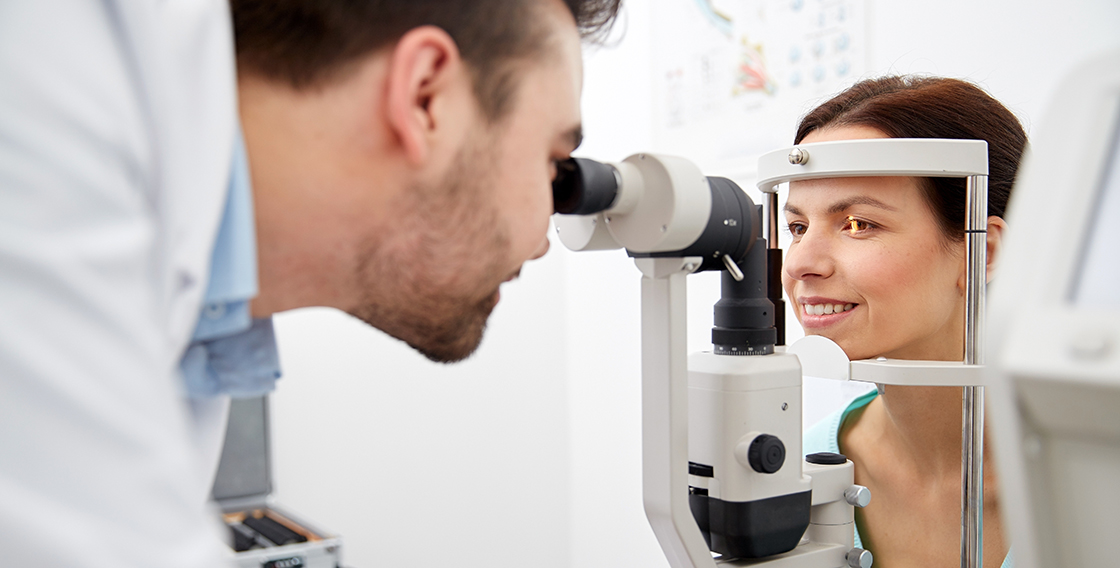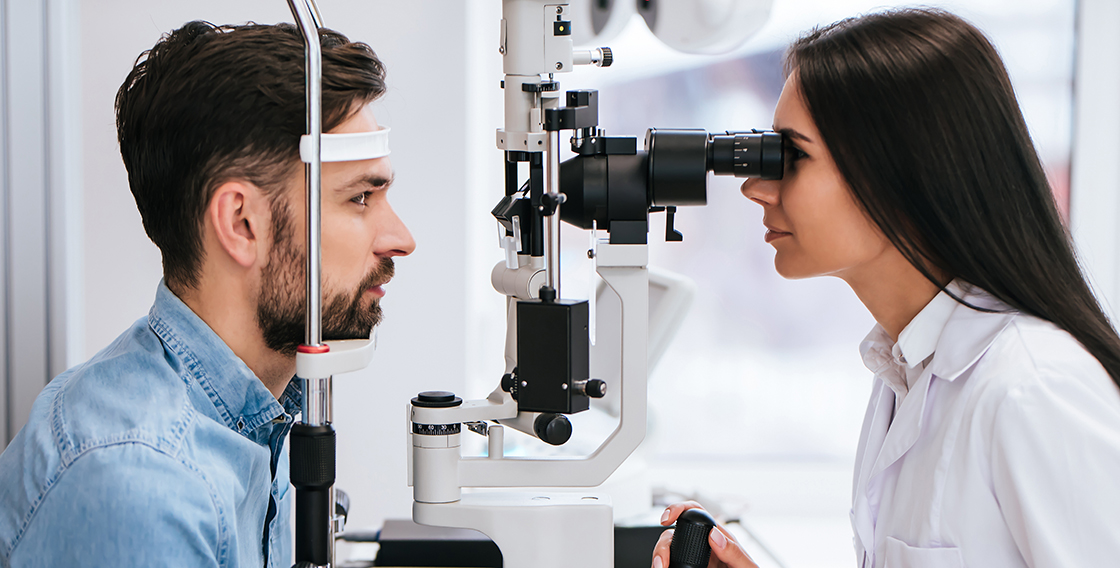The Different Types of Eye Exams and What They Test For

When it comes to eye health, there’s a big difference between a comprehensive eye exam and a basic vision screening. Comprehensive exams performed by professionals include many different tests, often in a single sitting. Below is a list of the most common eye tests included in comprehensive, professional eye exams:
Visual Acuity
The classic eye test that uses a Snellen Eye Chart to determine whether you will need corrective lenses. Patients sit a few feet away from the chart and recite letters, numbers, or symbols that become progressively smaller. The results of this test are indicated in proportional terms: 20/20, for example, or 20/40. If you have 20/40 vision, you need to stand 20 feet away to see what someone with perfect vision can see from 40 feet away.
Refraction
A test that is used to help determine whether you need corrective lenses. The optometrist places an object called a phoropter between the patient’s eye and an image and asks the patient to indicate which image appears to be clearer. The test helps physicians determine whether a patient will need nearsighted or farsighted correction.
Retinoscopy
A test often completed by children, and it allows the physician to determine an approximate prescription. Retinoscopy is usually performed before the refraction test. During the test, patients are asked to observe a single target image, allowing the eye doctor to use a combination of light and lenses to determine which kinds of corrective lenses may be needed.
Eye Focusing and Eye Teaming Tests
These are used to measure how your eyes function together. Optometrists will want to make sure they don’t put too much emphasis on individual eye tests since in the real world your eyes always work together!
Slit Lamp Tests
These tests are used to capture a variety of more serious eye problems or diseases, including corneal ulcers, macular degeneration, diabetic retinopathy, and cataracts. A “slit lamp” is another name for a small microscope that allows optometrists to magnify your eyes. This allows them to observe all the eye structures that are not visible to the naked eye, including patients’ eyelids, cornea, conjunctiva, iris, lens, and even the retina and optic nerve.
Tonometry
A test that allows optometrists to check for one of the most serious eye diagnoses: glaucoma. You might know tonometry as the “puff-of-air” test because it uses air to calculate the intraocular pressure of patients’ eyes. This helps eye doctors determine whether patients have high eye pressure (which puts individuals at risk for developing glaucoma).
Pupil Dilation
This is a technique used to help eye doctors take a better look at the internal structures of your eye, and it involves enlarging your pupils. Optometrists may use dilating drops to do this, which can temporarily increase your light sensitivity. Other eye doctors prefer to use a new technology called “optomap,” which uses a safe scanning laser that yields a digital image of the retina. There is some debate in the medical community around which test is more accurate; consult your eye doctor during your next comprehensive exam about which test would be best for your eyes!

